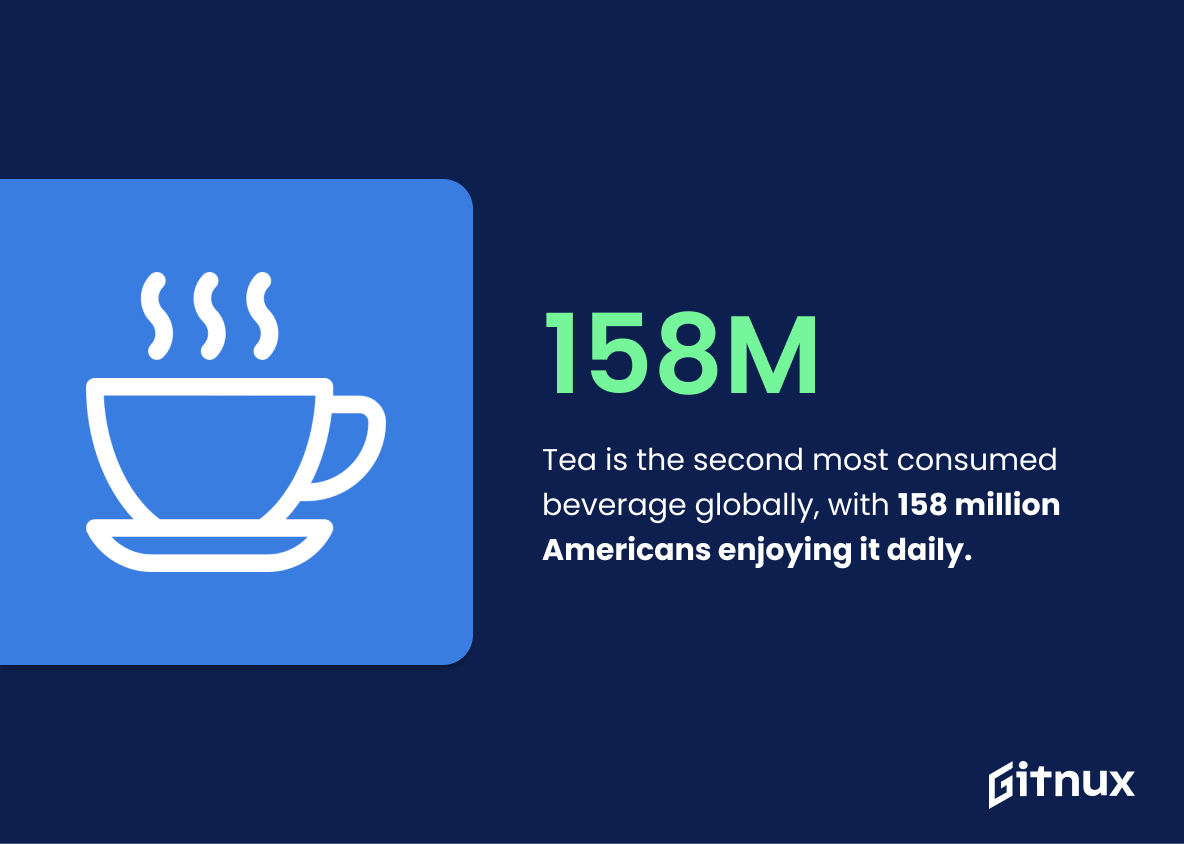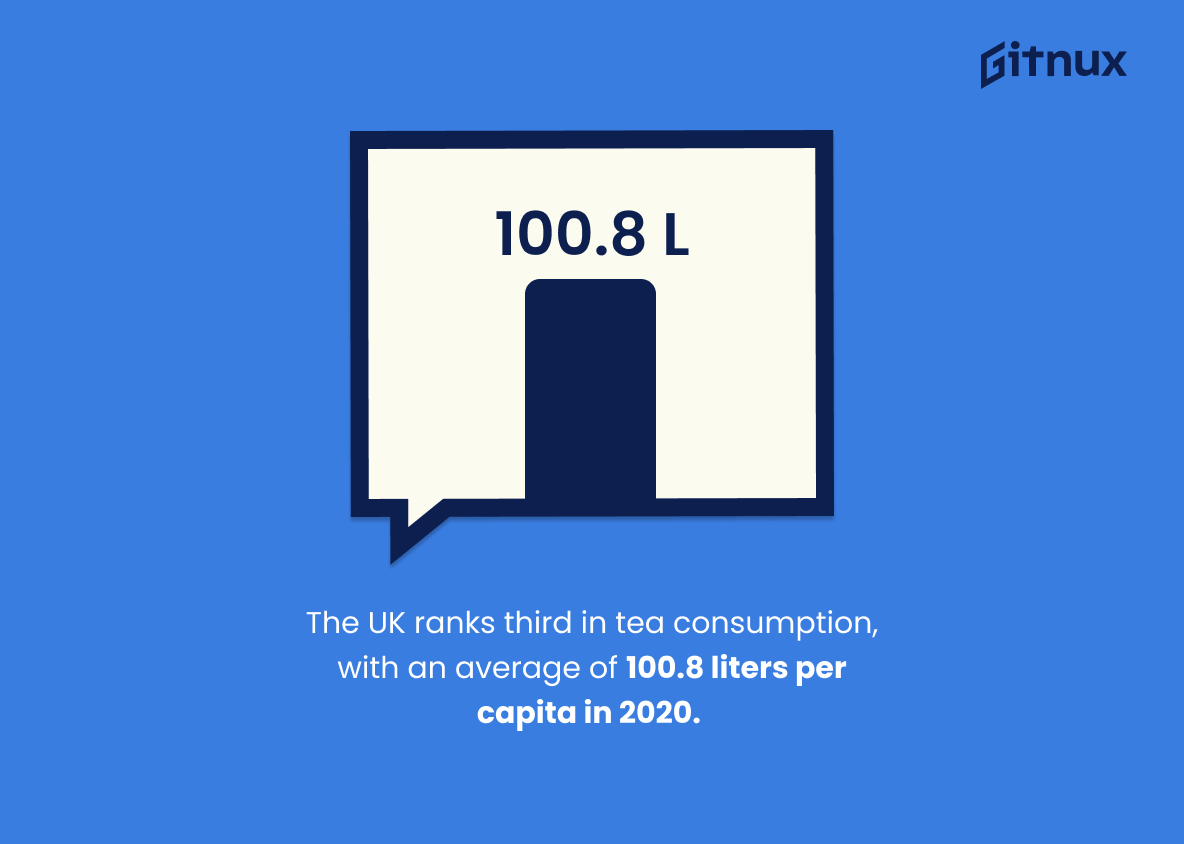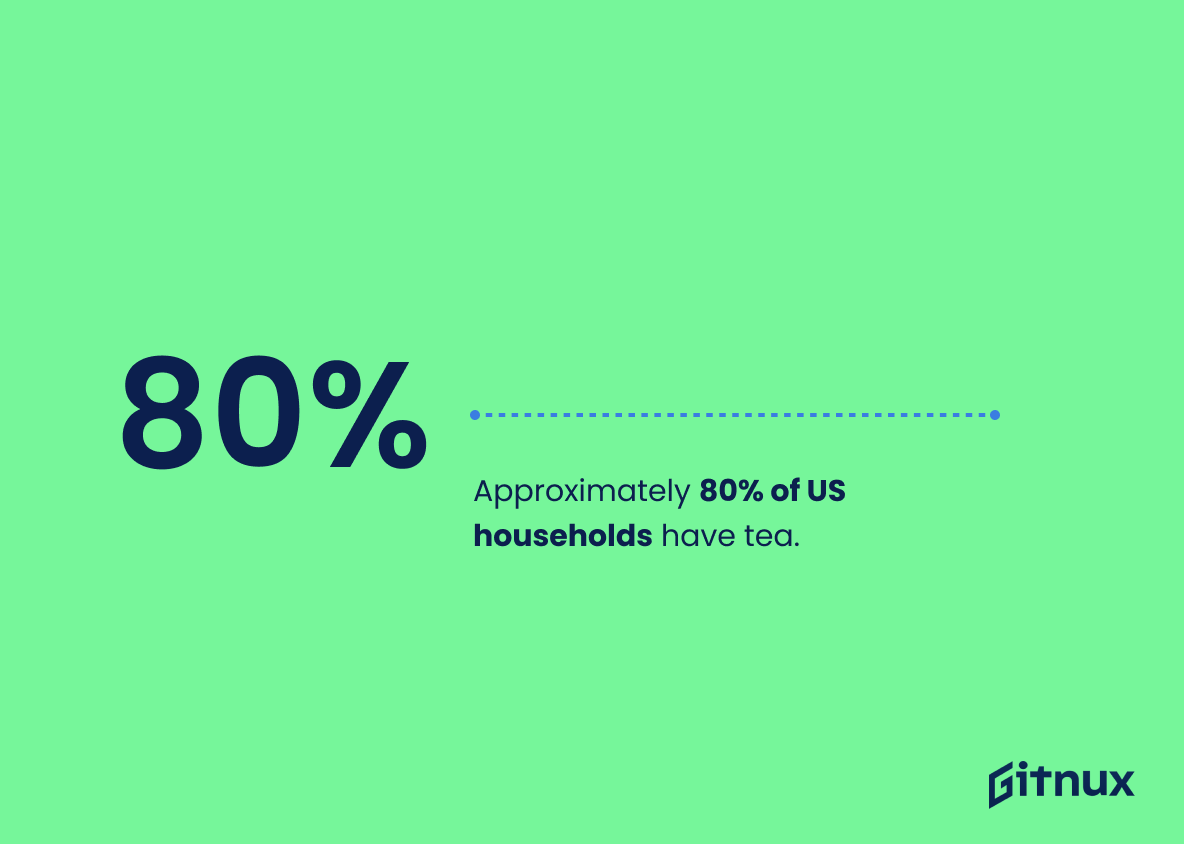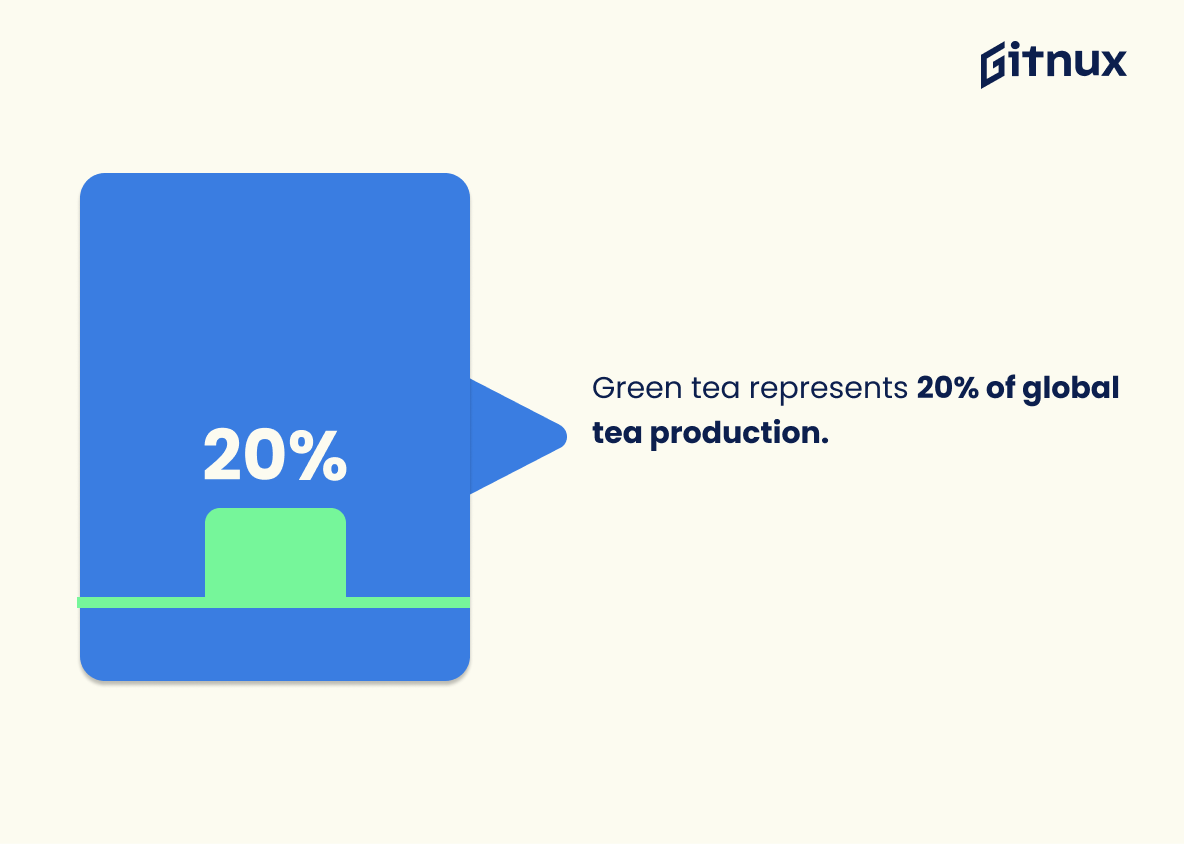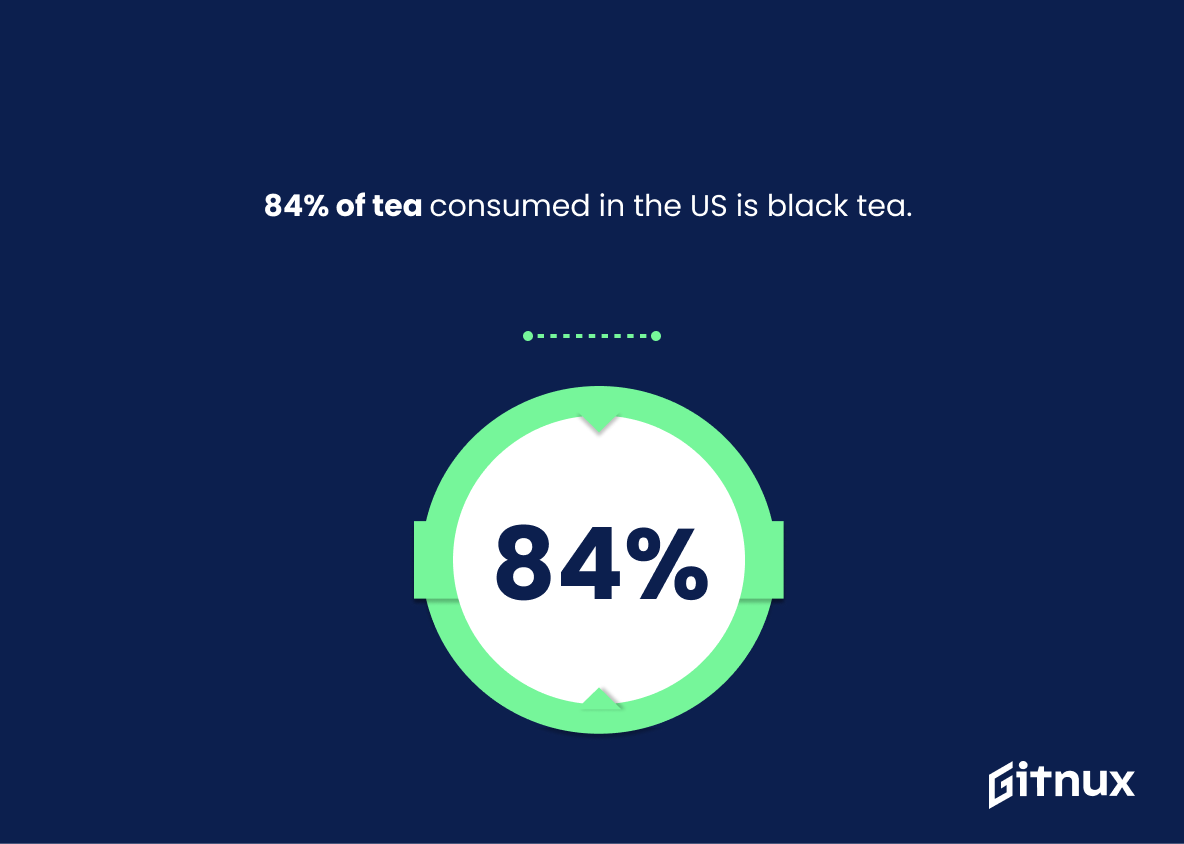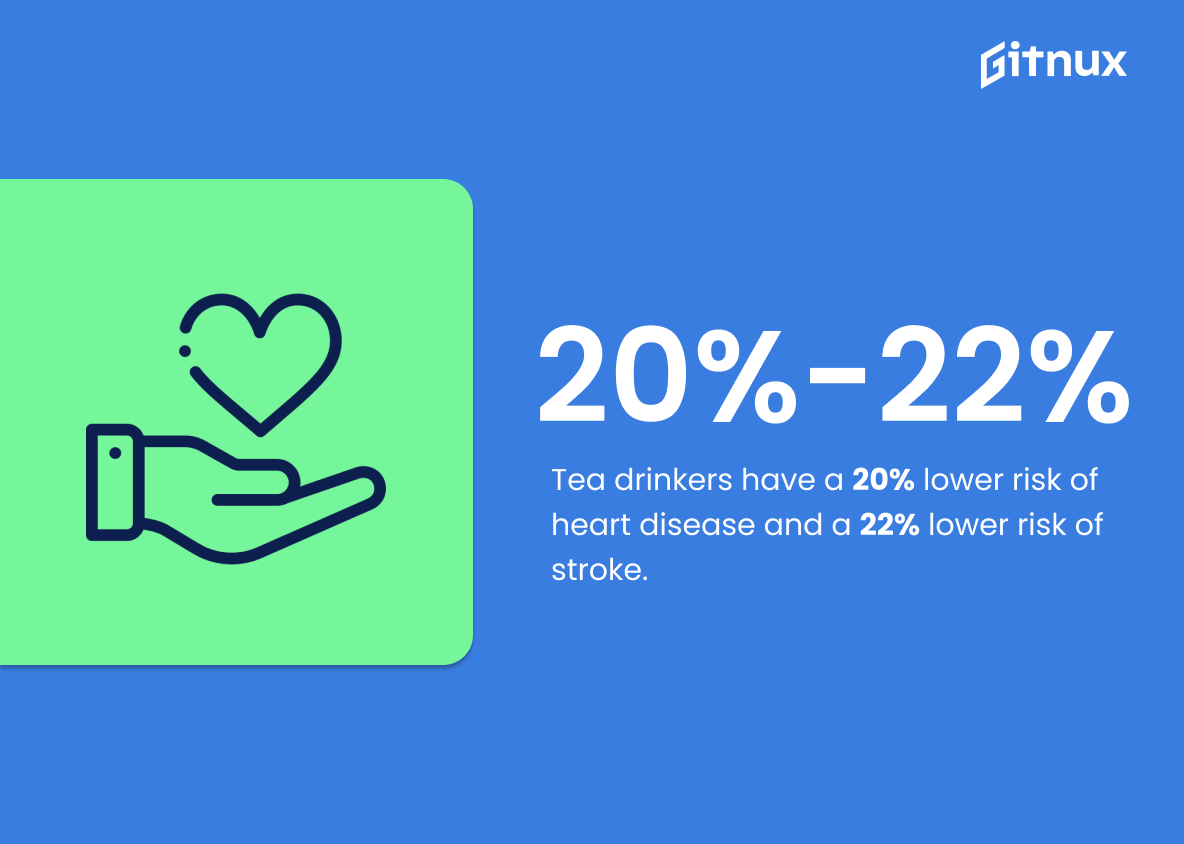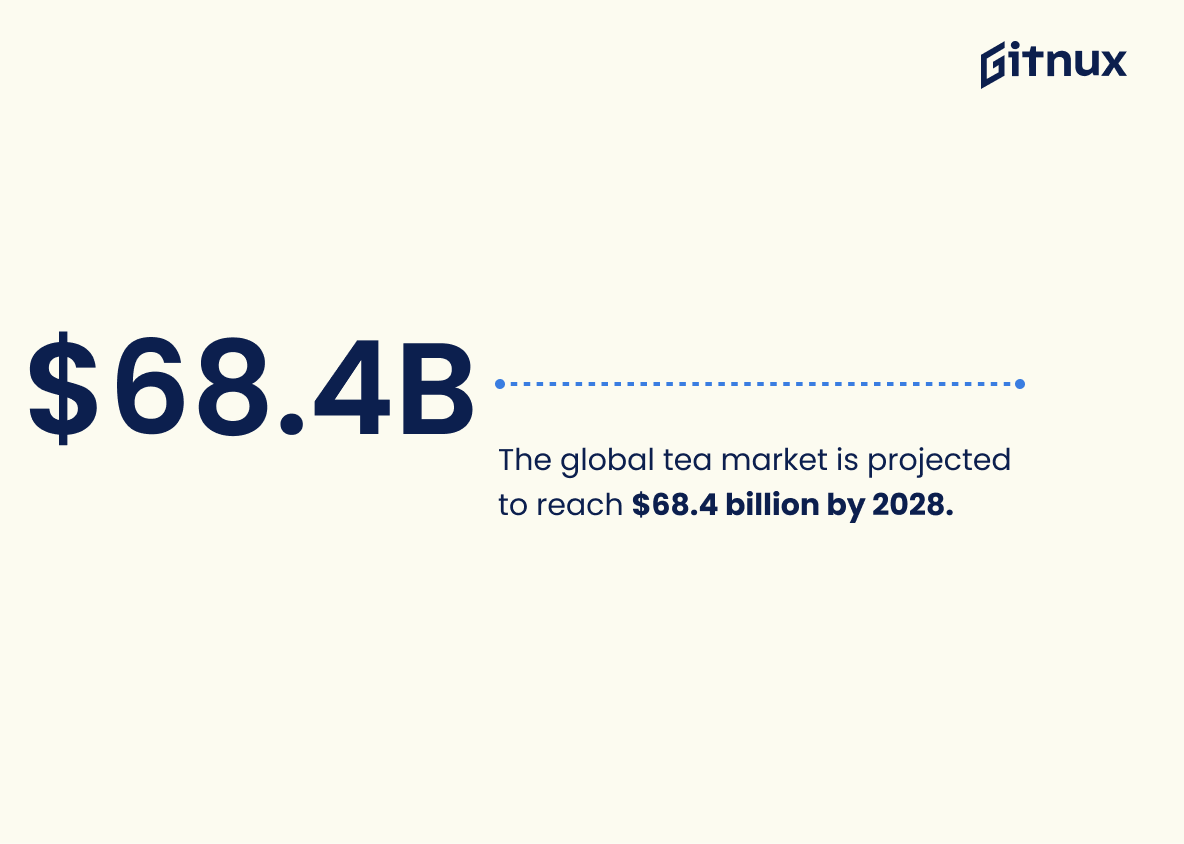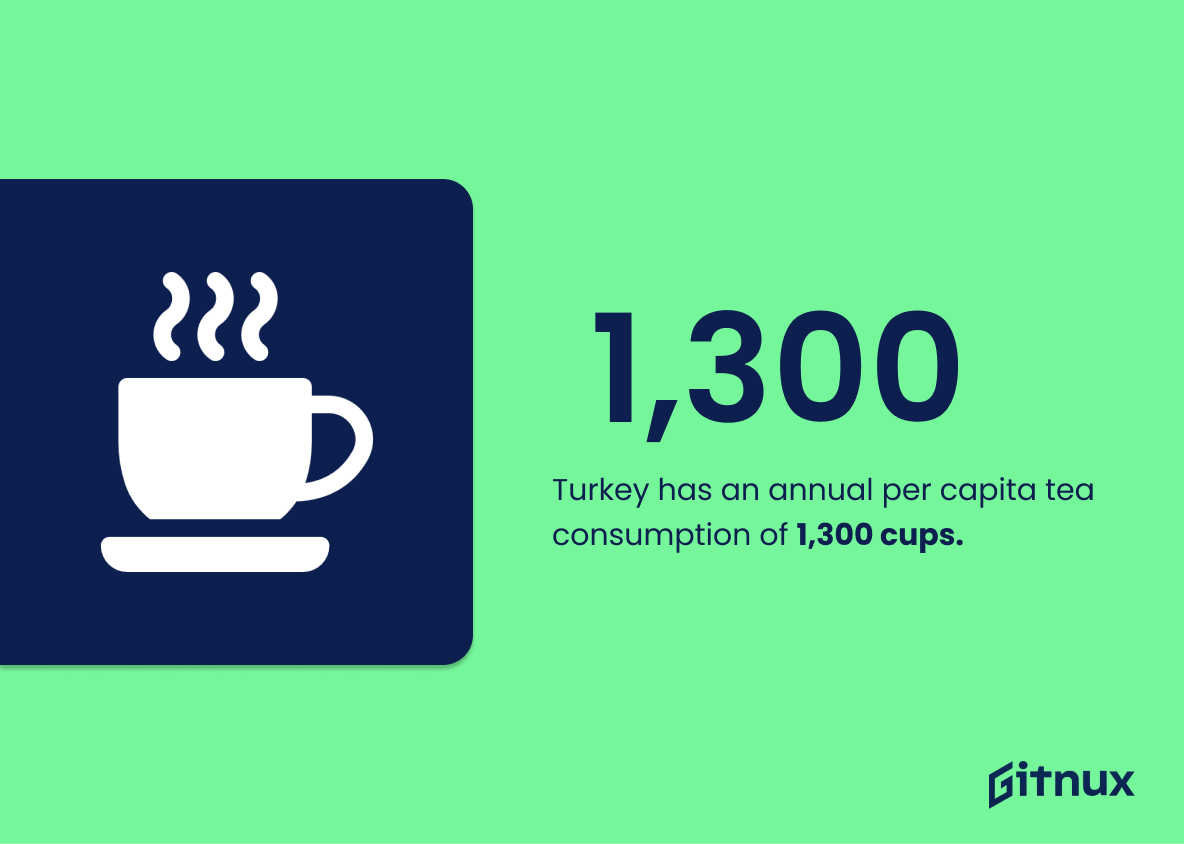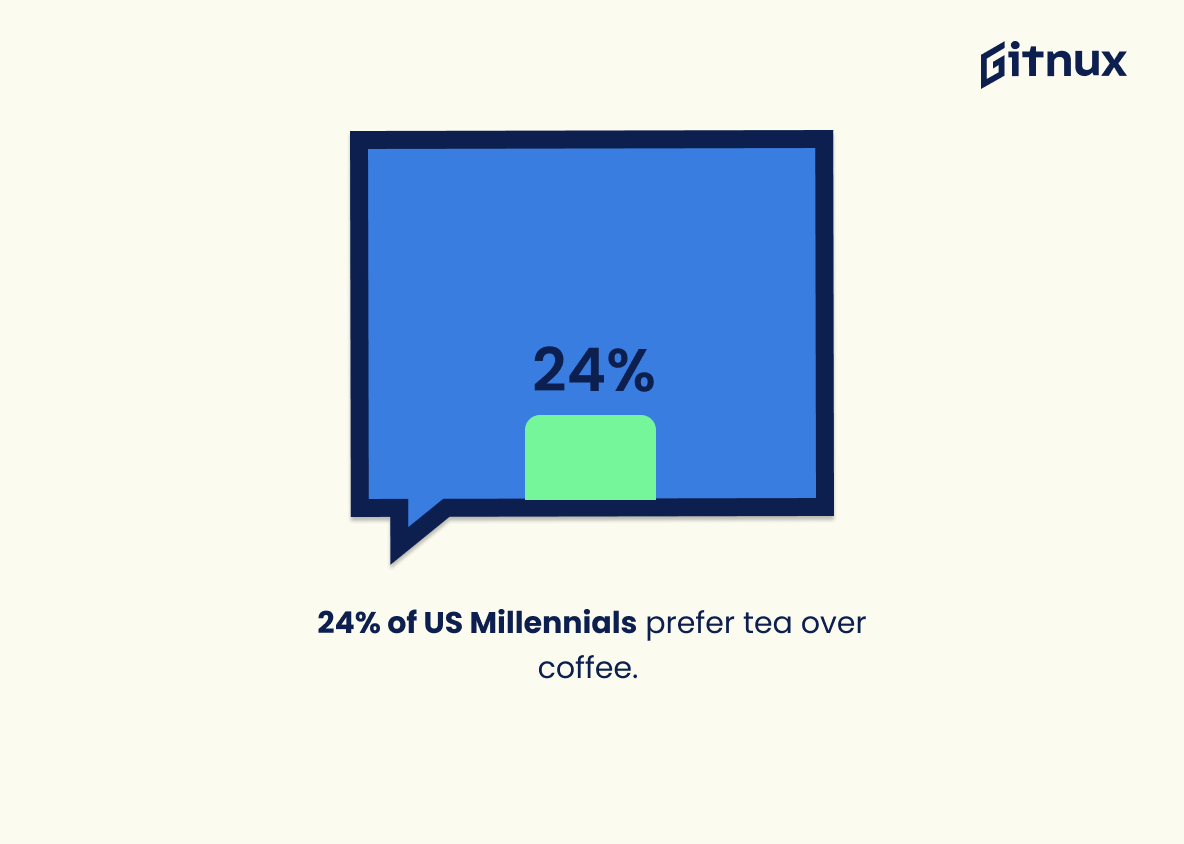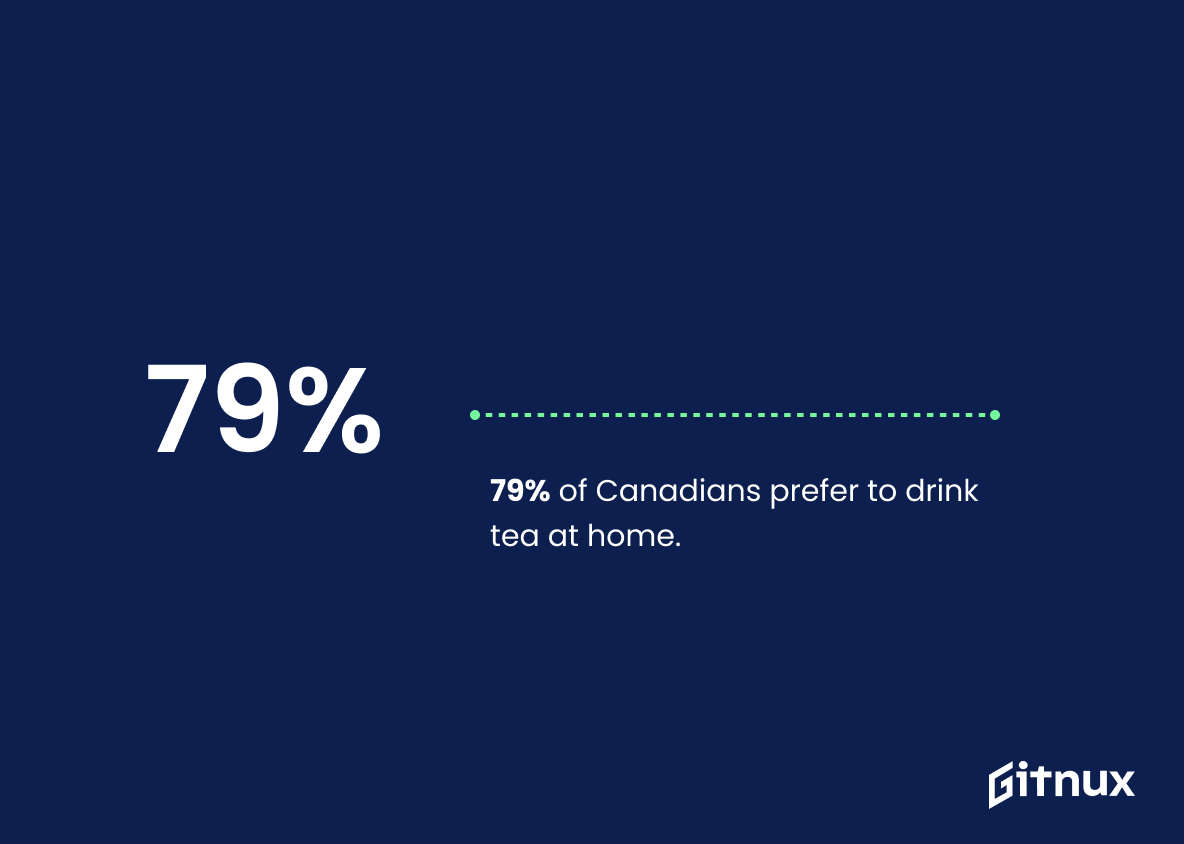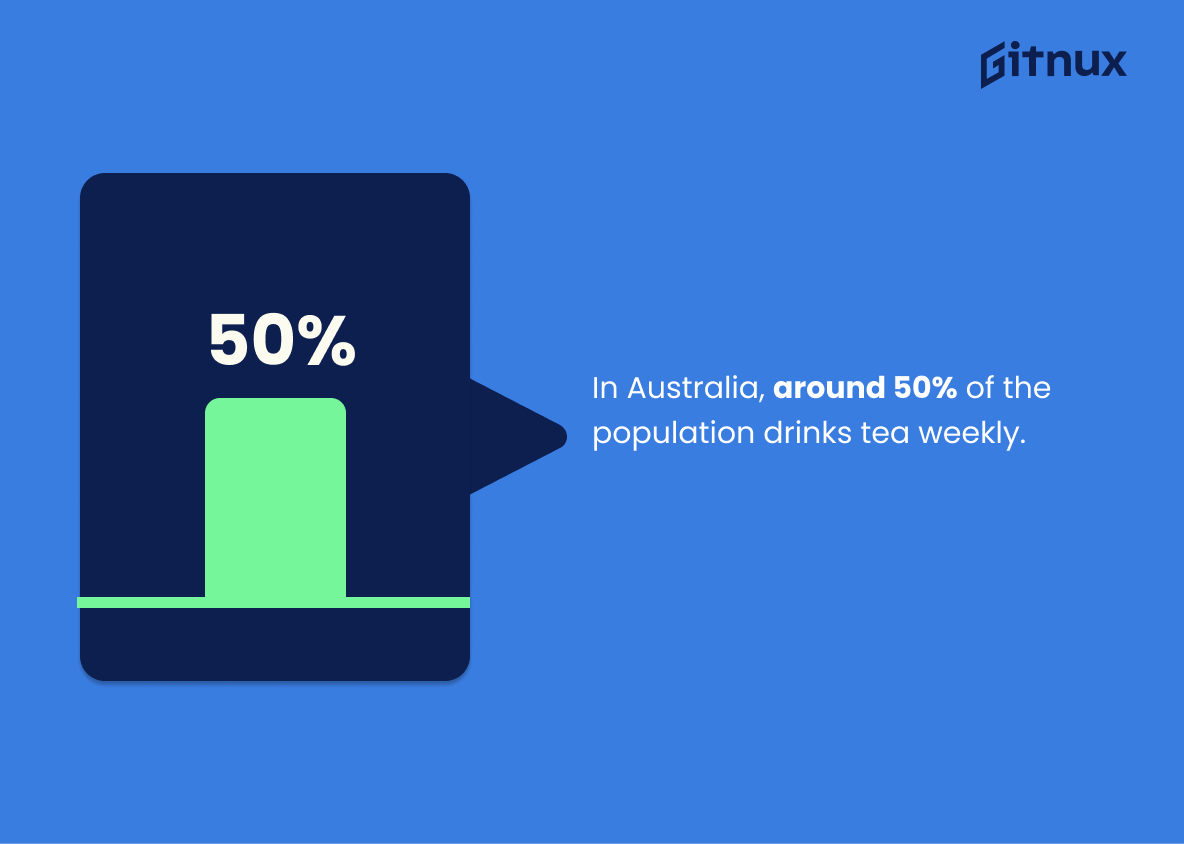Tea is one of the most popular beverages in the world, with an estimated 158 million Americans drinking it daily. In 2020, The UK was ranked as the third-largest tea consuming nation globally and individuals consumed on average 100.8 liters per capita that year. Tea has become a staple beverage for many households around the globe; approximately 80% of US households have tea in their cupboards while 84% of all tea consumed in America is black tea. Green teas are also widely enjoyed worldwide, representing 20% of total global production according to World Atlas data from 2019.
In addition to its popularity among consumers, research suggests that regular consumption may offer health benefits such as reducing risk factors associated with heart disease and stroke by up to 35%. This could explain why countries like Turkey boast high annual per capita consumption rates at 1,300 cups each year or why China produces 2.8 million metric tons annually – making them both top producers and drinkers respectively. Even Millennials prefer this hot drink over coffee – 34 percent choose it instead – which might be due to specialty teas becoming increasingly available across markets worldwide (valued at $9 billion).
These facts only scratch the surface when looking into how much people enjoy sipping on a warm cup o’tea. To learn more about who drinks what type where and how often keep reading our blog post about Tea Drinkers Statistics.
Tea Drinkers Statistics Overview
Approximately 80% of US households have tea in their cupboards.
This statistic is significant in the context of a blog post about Tea Drinkers Statistics because it demonstrates the widespread prevalence of tea in the United States. It shows that tea is a popular beverage among Americans, and that it is a staple in many households. This statistic provides a useful insight into the tea-drinking habits of Americans and can be used to inform further research into the topic.
Green tea represents 20% of total global tea production.
This statistic is significant in the context of Tea Drinkers Statistics as it highlights the prevalence of green tea in the global tea market. It demonstrates that green tea is a popular choice among tea drinkers, and that it is a major player in the tea industry. This information can be used to inform marketing strategies and to better understand the preferences of tea drinkers.
84% of the tea consumed in the United States is black tea.
This statistic is significant in the context of Tea Drinkers Statistics because it provides insight into the preferences of tea drinkers in the United States. It shows that the majority of tea drinkers in the US prefer black tea, which can be used to inform marketing strategies and product development. Additionally, it can be used to compare the tea drinking habits of the US to other countries, and to identify potential opportunities for growth.
Tea drinkers have a 20% lower risk of heart disease and a 22% lower risk of developing stroke.
This statistic is a powerful reminder of the potential health benefits of drinking tea. It highlights the fact that tea drinkers may be at a lower risk of developing heart disease and stroke, two of the leading causes of death in the world. This is an important statistic to consider when discussing the health benefits of tea drinking, and it should be taken into account when making decisions about one’s diet and lifestyle.
In the UK, 100 million cups of tea are consumed daily.
This statistic is a testament to the sheer popularity of tea drinking in the UK. It serves as a reminder of how deeply ingrained tea drinking is in the culture of the nation, and how it has become an integral part of the daily lives of many people. It is a powerful indicator of the importance of tea in the UK, and a reminder of the impact it has on the lives of its citizens.
The global tea market is expected to reach an estimated value of $68.4 billion by 2028.
This statistic is a testament to the immense popularity of tea drinking around the world. It shows that the tea market is growing rapidly and is expected to reach a staggering value of $68.4 billion in the next eight years. This is a clear indication that tea drinkers are becoming increasingly more numerous and that the demand for tea is on the rise. This is an important statistic for any blog post about tea drinkers statistics, as it provides a valuable insight into the current state of the tea market.
In 2020, China produced approximately 2.8 million metric tons of tea, making it the largest tea-producing country.
This statistic is a powerful indicator of the importance of tea in China. It speaks to the country’s commitment to the beverage, and the sheer volume of tea produced is a testament to the popularity of tea among Chinese consumers. This information is essential for any blog post about tea drinkers statistics, as it provides a valuable insight into the tea-drinking habits of the world’s largest tea-producing nation.
34% of all tea produced globally comes from China.
This statistic is significant for tea drinkers because it highlights the sheer magnitude of China’s tea production. It is a reminder that China is a major player in the global tea industry, and that a large portion of the tea consumed around the world is produced in the country. This statistic is also important for tea drinkers to consider when selecting their tea, as it may influence the quality and flavor of the tea they choose.
The annual per capita tea consumption in Turkey is 1,300 cups.
This statistic is a telling indication of the tea-drinking culture in Turkey. It shows that tea is a popular beverage among the population, with each person consuming an average of 1,300 cups per year. This statistic is a testament to the importance of tea in Turkish culture and provides insight into the habits of tea drinkers in the country.
About 24% of Millennials in the US prefer to drink tea, as opposed to coffee.
This statistic is significant in the context of a blog post about Tea Drinkers Statistics because it reveals the growing trend of Millennials in the US opting for tea over coffee. It highlights the fact that tea is becoming increasingly popular among this demographic, and provides insight into the preferences of this generation.
79% of Canadians prefer to drink their tea at home.
This statistic is significant in the context of a blog post about Tea Drinkers Statistics because it reveals that the majority of Canadians prefer to enjoy their tea in the comfort of their own home. This indicates that Canadians are likely to prioritize convenience and comfort when it comes to their tea drinking habits, and that they may be less likely to venture out to cafes or restaurants for their tea.
In Australia, around 50% of the population consumes at least one cup of tea per week.
This statistic is a powerful indicator of the prevalence of tea drinking in Australia. It shows that tea is a popular beverage among Australians, and that it is consumed by a large portion of the population. This information can be used to inform a blog post about tea drinkers statistics, as it provides a baseline for understanding the size and scope of the tea drinking population in Australia.
Tea sales in the United States are forecast to grow by 4.1% annually through 2024.
This statistic is a clear indication that the tea drinking culture in the United States is on the rise. It shows that more and more people are turning to tea as a beverage of choice, and that the industry is growing. This is great news for tea drinkers, as it means that there will be more options available to them in the future. Furthermore, it also means that the tea industry is likely to become more competitive, which could lead to better prices and more variety for consumers.
40% of the global tea output in 2020 came from South and Southeast Asia.
This statistic is a powerful indicator of the importance of South and Southeast Asia in the global tea industry. It highlights the region’s significant contribution to the production of tea, and its impact on the global tea market. This is especially relevant for tea drinkers, as it shows the importance of the region in providing the tea they enjoy.
Conclusion
Tea is a popular beverage around the world, with an estimated 158 million Americans drinking it daily. The UK and US are two of the largest tea-consuming nations globally, while China produces 34% of all global tea output. Green tea represents 20% of total production worldwide, but black tea remains more popular in the United States at 84%. Studies have shown that regular consumption can reduce risk for heart disease and stroke by up to 35%, making it a healthy choice for many people.
Tea sales continue to grow annually across multiple countries including Canada, Australia and the United States; specialty teas remain particularly popular among Millennials in America. With its numerous health benefits as well as its widespread availability throughout different regions on Earth, there’s no doubt that this beloved drink will remain one of our favorite beverages for years to come.
References
0. – https://www.packagedfacts.com
1. – https://www.tea.ca
2. – https://www.statista.com
3. – https://www.heart.bmj.com
4. – https://www.worldatlas.com
5. – https://www.tea.co.uk
6. – https://www.worldteaexpo.com
7. – https://www.teausa.com
8. – https://www.prnewswire.com
9. – https://www.roymorgan.com
10. – https://www.fortunebusinessinsights.com
11. – https://www.mintel.com
